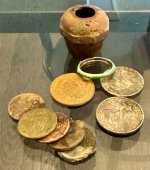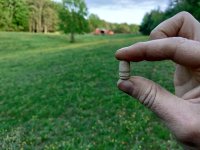bigscoop
Gold Member
- Jun 4, 2010
- 13,373
- 8,689
- Detector(s) used
- Older blue Excal with full mods, Equinox 800.
- Primary Interest:
- All Treasure Hunting
Bigscoop, You can place Thomas J. Beale going west in 1817 and 1822 because of his letters laying in the post office in Franklin, Missouri. Franklin, Missouri is 148 miles west of St. Louis up the Missouri River. So don't tell me that Thomas J. Beale did not go west. There were two other Beale's out west at that time in history they were laying out cities and selling the land so they made money that way also.
Those letters. while suspicions, don't establish much of anything in regards to the Beale adventure story. Look at the Santa Fe. trail, which turns southwest and not northwest. Frankiln lays between St. Louis and Independence along the Santa Fe. route. Could be the later route that was taken. Yes? So the letters you speak of are only suspicious in regards to a Thomas Beale/Beall that apparently never got his mail. They do not establish that a Thomas Beale/Beall ever went northwest.


 The "Santa Fe." trail was used to go to many destinations. It was first established by traders and trappers, many of them French, and many of them doing business in Santa Fe. and Toas, as well as other locations. Of course, this was before "Americans" took the credit for blazing the trail.
The "Santa Fe." trail was used to go to many destinations. It was first established by traders and trappers, many of them French, and many of them doing business in Santa Fe. and Toas, as well as other locations. Of course, this was before "Americans" took the credit for blazing the trail. 



